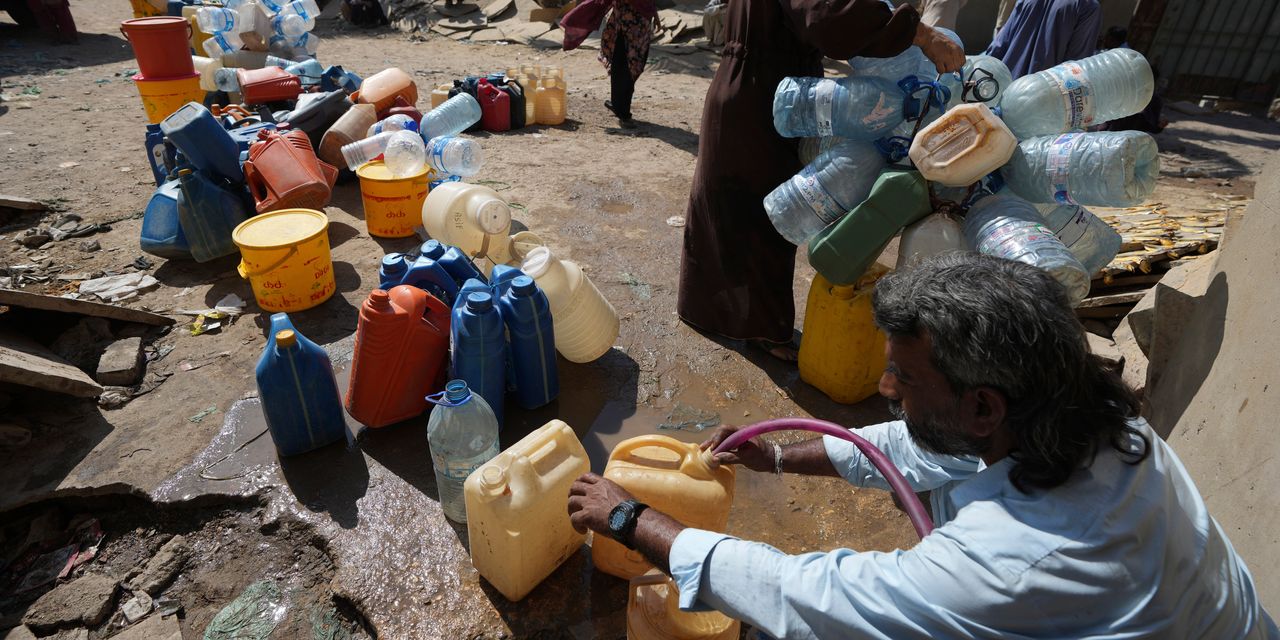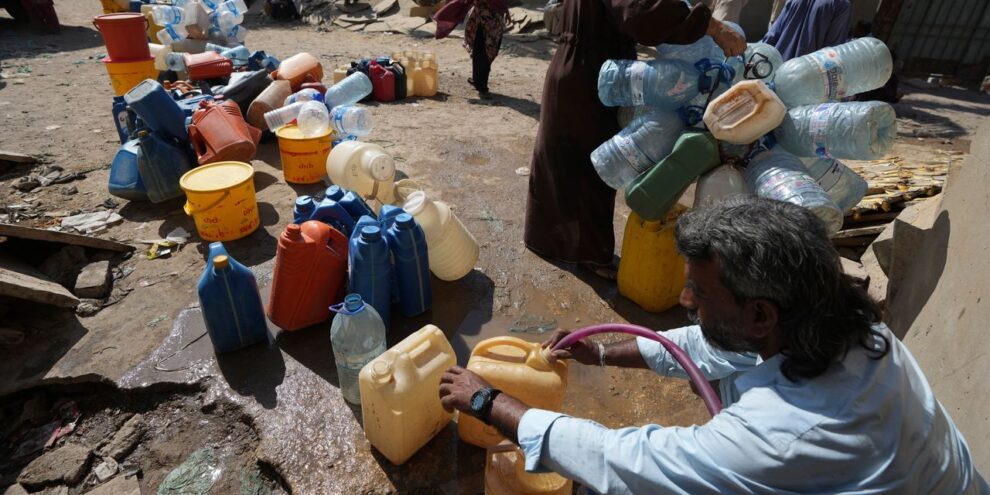
Nearly a quarter of the globe’s population does not have reasonable access to safe drinking water, and nearly half lacks access to basic sanitation, a new report issued as part of the first major United Nations conference on water in over 45 years warns.
The U.N.’s World Water Development Report 2023 sets a target of 2030 to have improved potable water access and better handling of wastewater for all humans on this growing planet. Late last year, the number of people on Earth crossed the threshold of 8 billion and is only rising.
The report hits as the U.N. this week is gathering experts for the first water-focused conference since 1977. There are 171 countries, including over 100 ministers, on the speakers list, along with more than 20 organizations.
Don’t miss: How to determine if your drinking water is safe as EPA moves to restrict ‘forever chemicals’
Richard Connor, lead editor of the report, told a news conference that the estimated cost of meeting the 2030 goals is between $600 billion and $1 trillion a year.
But that’s spending, he says, that will be necessary to provide potable water to the 2 billion people who don’t have it and sanitation to the 3.6 million in need of these services.
On average, 10% of the global population lives in countries with high or critical water stress and up to 3.5 billion people live under conditions of water stress at least one month a year, said the report.
According to the report, water use has been increasing globally by roughly 1% per year over the last 40 years “and is expected to grow at a similar rate through to 2050.” Population growth, improving socio-economic development and changing consumption patterns are combining to drive up water needs, while major droughts and other factors are slashing water’s availability.
Wealthier nations are using more water due to industrial growth, while emerging economies are seeing both industrial use and higher personal use of water, especially in expanding cities.
And, with agriculture using 70% of all water globally, Connor said, irrigation for crops has to be way more efficient moving forward, such as through drip irrigation.
Related: World Water Day raises alarm for groundwater and ‘forever chemicals’ — how to invest
Since 2000, floods in the tropics have quadrupled while floods in the north mid-latitudes have increased 2.5-fold, the report said. Floods can contaminate clean-water sources.
Trends in droughts are more difficult to establish, the report said, “although an increase in intensity or frequency of droughts and ‘heat extremes’ can be expected in most regions as a direct result of climate change.”
As a result of climate change, the report said, “seasonal water scarcity will increase in regions where it is currently abundant — such as Central Africa, East Asia and parts of South America — and worsen in regions where water is already in short supply, such as the Middle East and the Sahara in Africa.”
Read: Biden declares first ocean climate-action plan meant to help fishing and limit warming seas
And: Fighting climate change will take ‘everything, everywhere, all at once,’ say U.N. scientists
“The hungriest people in [Africa] are also the thirstiest. People have depleted their last penny as they lost their crops and animals. They now have to pay vendors who continuously hike water prices,” said Fati N’Zi-Hassane, director of Oxfam in Africa, a group that is a participant at the U.N. conference.
The drought in portions of Africa that has lasted for more than two years already has killed more than 13 million livestock, dried up thousands of hectares of crops and driven 1.75 million people from their homes in search of water and food.
In Somalia’s Bay region, for instance, where 76,000 people are already facing a famine like conditions, water prices have more than doubled.
“Hundreds of thousands of people are now relying on emergency water trucking, or unprotected wells which are unsafe and contaminated. Without clean water, people are at risk of contracting easily preventable diseases, such as acute watery diarrhea and cholera,” added N’Zi-Hassane.
Khadra Omar, a 26-year-old resident from Mogadishu, said through Oxfam that “people are now risking their lives consuming dirty water as a result of the drought.”
The U.N. report also took a look at wastewater, and found that globally about 80% of wastewater is released into the environment without any treatment.
That’s not only directly risky to the humans that come in contact with wastewater but damages aquatic ecosystems, which can impact food sources.
Improving management of water resources, increasing water reuse and promoting cooperation across borders on water use will be discussed during the three-day U.N. Water Conference.
The Associated Press contributed.











Add Comment